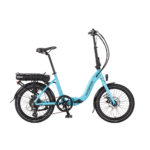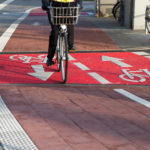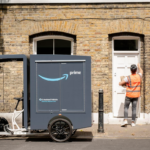On the French pedelecs forum I find the first review of the new Giant Twist.
I try to summarize it (sorry for mistakes: I'm translating from a foreign language to another…)
Good product, comfort, ease of handling, the weight of the front motor is not felt.
Assistance sets off immediately, but it is more progressive that on the old model.
The motor emits a light noise of friction and riding without assistance is not advised.
The NiMH batteries offer till 80 km of autonomy.
Comfortable pedalling but a bit unnatural in low gears.
The modality "sport" offers greater power and speed.
As a comparison, the assistance of the Flyer appears more powerful and user-friendly.
Uphill one must quickly switch to "sport" in order not to get tired.
Even though the assistance is not the smoothest of the market, it remains one of most effective in the medium range.
Downhill a push-button starts a motor brake that allows recharging something.
Good brakes, easy switch between the two batteries.
As a conclusion: comfortable and manageable, great autonomy, assistance less discreet than the previous model, light friction of the motor.
[My impressions: very good for a hub motor that it starts immediately, but very bad the loss of smoothness (friction of the motor!) and, it seems me to understand, of hill climbing performance... the position of the batteries and the shape of the rack do not convince me... the price/performance ratio is very competitive]
I try to summarize it (sorry for mistakes: I'm translating from a foreign language to another…)
Good product, comfort, ease of handling, the weight of the front motor is not felt.
Assistance sets off immediately, but it is more progressive that on the old model.
The motor emits a light noise of friction and riding without assistance is not advised.
The NiMH batteries offer till 80 km of autonomy.
Comfortable pedalling but a bit unnatural in low gears.
The modality "sport" offers greater power and speed.
As a comparison, the assistance of the Flyer appears more powerful and user-friendly.
Uphill one must quickly switch to "sport" in order not to get tired.
Even though the assistance is not the smoothest of the market, it remains one of most effective in the medium range.
Downhill a push-button starts a motor brake that allows recharging something.
Good brakes, easy switch between the two batteries.
As a conclusion: comfortable and manageable, great autonomy, assistance less discreet than the previous model, light friction of the motor.
[My impressions: very good for a hub motor that it starts immediately, but very bad the loss of smoothness (friction of the motor!) and, it seems me to understand, of hill climbing performance... the position of the batteries and the shape of the rack do not convince me... the price/performance ratio is very competitive]
Last edited:






